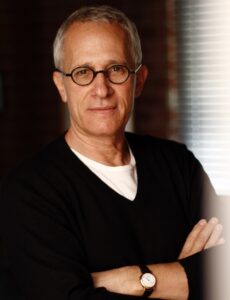
With a career that spans four and a half decades, James Newton Howard is a composer’s composer, having received Grammys, Emmys and eight Academy Award nominations. Just a few highlights include writing the original main title sequence from the hit NBC show E.R. and co-writing the scores (with Hans Zimmer) for Christopher Nolan’s Batman Begins and The Dark Knight.
Even before he began scoring films in the mid-80s, Howard was already a respected and prolific session and live musician, playing keys with some of the top artists of the ‘70s, co-writing many hit songs, and producing and doing orchestral arrangements on dozens of hit records. His score for Gary Marshall’s Pretty Woman in 1990 was a huge turning point for Howard, and he never turned back, scoring over one hundred films since then. To say he’s continued to be as prolific as a film composer as he was a session player would be an understatement.
That brings us to Howard’s latest two scores for Paul Greengrass’ News of the World and for the brand-new Disney animated film, Raya and the Last Dragon. The News of the World score is absolutely fantastic, adding so much tension and emotions to a movie where the performances are so good, they’d work even without the historically-accurate arrangements. And then you get to Raya, a magical action-adventure where Howard’s score pulls you into her world and pushes things forward with an added shot of musical adrenaline.
Below the Line got on the phone with Mr. Howard last week, and our time just flew by as he had so many interesting things to say about both movies, as well as his process for crafting all those scores that we love.
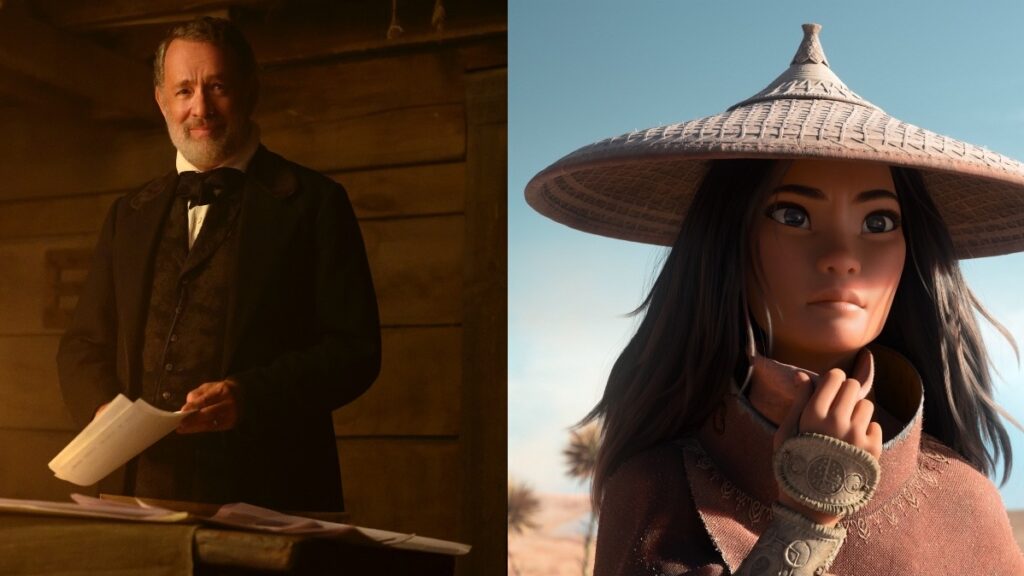
James Newton Howard: Yeah, that was a fun movie. We had a lot of good fun on that. It was fun to do animation again after a long time for me.
BTL: I was listening to both scores earlier, and I also listened to the ‘80s album, James Newton Howard and Friends, which I’d never heard before. I liked it.
Howard: The thing about that record, that was not really a James Newton Howard record. That was with the Toto guys, but contractually, they couldn’t have their name on it, so we came up with James Newton Howard, but that was a direct-to-disc recording, right? That was the whole deal – the engineering was really the star of that album — great engineer. But thank you.
BTL: Often, when I speak with composers, I ask about their background, but you have such a rich Wikipedia page that covers so much, anyone can just click on that and read your entire vast musical history. What was the big revelation that got you from being this orchestrator and live and studio musician into scoring films? What made you realize that was the direction to go in?
Howard: Well, I was quite a successful studio musician for a period of time, and one of the things I was doing a lot of was string arrangements, sort of orchestral arrangements for pop records, from Barbra Streisand or Earth, Wind and Fire, Olivia Newton-John, and my concert master at the time was this great guy, and he kept saying during one of my recording sessions “James, you oughta write for TV or movies.” And I said, “Yeah I don’t know how to do that, blah, blah, blah, blah, blah.” Eventually, somebody offered me a movie, and I turned it down. This was in 1984, I think, or ’85, because I was just scared, quite frankly. I had no idea how to write movie music and didn’t know how to synchronize it. Anyway, make a long story short, I finally said “yes.” I loved it immediately, deeply, passionately, and that’s all I wanted to do.
I just was so lucky. I got offered a movie, and I was lucky enough to keep getting offered them. That was 35 years ago. I was fortunate that I’d been in enough situations, whether it was with Elton’s band, doing orchestral arrangements for him or playing synthesizers for other people. I kind of had a lot of tricks to the trade that were really useful as a film composer. When I started doing movies, that whole skill set that I was lucky enough to acquire, because of being hired by all these different people, really came into play.
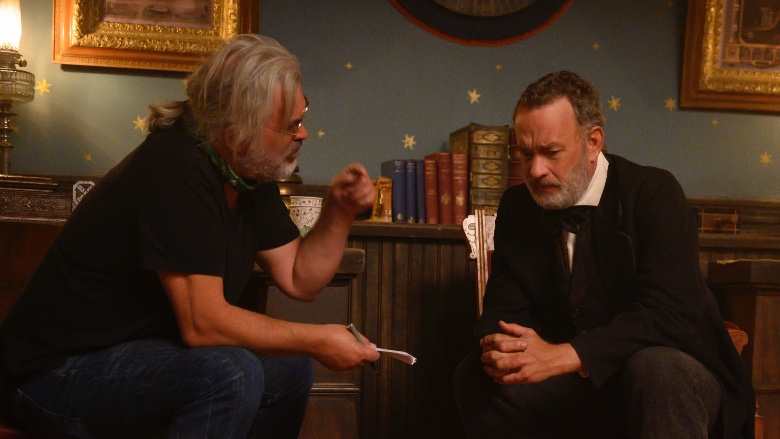
BTL: I spoke to Paul Greengrass a few months ago, and I was surprised you two had never worked together before, so how did that come together?
Howard: Paul was working very successfully with another composer who I admire greatly, John Powell. They did all the Bourne movies together, and I think they did United 93 and Green Zone. I think they had a fantastic relationship. Sure, I would have loved to work with [him], but I’m not going to go and try and undermine John’s career and say, “Hey, Paul, what about hiring me?”
I was extremely thrilled when I was asked to work with Paul, because obviously I had admired him greatly. It was beyond what I was hoping. We had a great time, the movie is really, really a great musical opportunity and Billy Goldenberg, the editor, and I have worked together on several movies. It was all very comfortable and fun and challenging all at the same time, so it was a good project.
BTL: I think you’re one of the few who worked on News of the World that had actually worked on a Western before. I went back and listened to the score for Hidalgo, and that was very different. You’ve done Westerns before, so how did you approach this one differently?
Howard: Did you hear Wyatt Earp? Cause that was kind of a big Western. It’s always the same with me and just trying to tell the story in the best way I can. I do take a light touch when it comes to period instruments, because I think you can do that a little too much. We had a couple of great road trip opportunities in the movie to use more instruments of the time — guitars and fiddles. I like to use ancient instruments, I’ve used them many times in my scores, but we use them differently in this one because our core instrument group is viola de gambas and cello d’amours and old gut string fiddles. Everything was so broke, Paul said, “How do we make the music sound broken?”
We combined some of these ancient which I have a little bit more of a roughly-hewn sound — some people would disagree with that. But to me, they sound a little edgier and combined them with some bits and pieces of samples I created and then surround it with a more traditional orchestra when we needed it. Everything just seemed to fit. The guitar seemed to fit in the right spot, and not too much of it. Even a little piano here and there. I wasn’t really thinking about it. I was just thinking what was working best scene by scene, I guess.
BTL: What was the first conversation or questions you had for Paul when you started this?
Howard: The first thing we talked about really was that idea of a broken world, that this was a story that was taking place when nobody had any money and people were deeply divided to say the least, and the kind of wandering trying to find how they all fit into this new world, which has been completely broken apart. Then we talked more specifically about Tom Hanks’ character and Helena’s character and very clearly how were we going to describe this man who is carrying some hidden grief, apparently. He’s a loner, he’s an outsider, he’s looking for a way to fit in, he wanders around, from town to town, reading the news. He runs into this other character, this kind of wildling little girl who’s also, obviously, an outsider and lost and trying to figure out where she belongs.
He was very interested in a story of restitution and a story of healing. I think that’s very important to him. Happily and coincidentally, it couldn’t have come out a more relevant time, I think. We talked about the things you talk about before I really have an opportunity to get in front of the images and send him some music, which is where the proof of the pudding is. We just basically had dinner, we sat out in the middle of the desert with Tom and kind of looked around and imagined what it must have been like with John Ford and his crew out there, and we just felt like little kids making a Western out in the middle of the New Mexico desert.
BTL: So you met with them while they were actually shooting…
Howard: I did. I got to go out, I think it was in November of 2019, and of course, that was the last time I set eyes on Paul in person, because COVID came up. Our post-production process was a little different than most of the time. Through the miracle of technology, we were able to go through a months-long demo-making process and I’d send him music and he’d get on a visual, either zoom or some other thing that we were using at the time. We’d talk it through, and we took a big break when COVID hit in March, of course, and the cutting room shut down, my studio shut down, and we all came back together a couple months later. I don’t know what it was, whether it was having a two-month break or whether was just having a deeper appreciation for life as we once knew it. I felt extremely energized just to be back at work. I kind of went through the whole movie again and re-did everything with Paul very closely. I think that’s when we really nailed the score, after we had some time to get away from it for a while.
BTL: Obviously, you use a lot of live instruments, so how were you able to record?
Howard: Yeah, I mean that’s not unusual. We recorded remotely. I’ve done that many times where the orchestra can be in one place or another. In this case, it was Abbey Road in London. I was in Los Angeles, the sessions would start at 2pm London time, so I’d be up, ready to go at 6am. With a very sophisticated sync system that we were able to monitor and see everything in real time with very little delay. We used a half-size orchestra, because Abbey Road would only let a much smaller number of musicians in the room, which was great. Where we needed the big size of more musicians, sometimes we would do the performance two times, and we would use both performances, and you get the feeling of 60 or 80 musicians instead of 40, and it was great. The musicians were all distanced and wearing masks, which is kind of weird, but I have good friends, obviously, in the orchestra here in Los Angeles, and also there. It felt pretty good. After the initial couple of hours, we were all kind of back home again, so it went well.
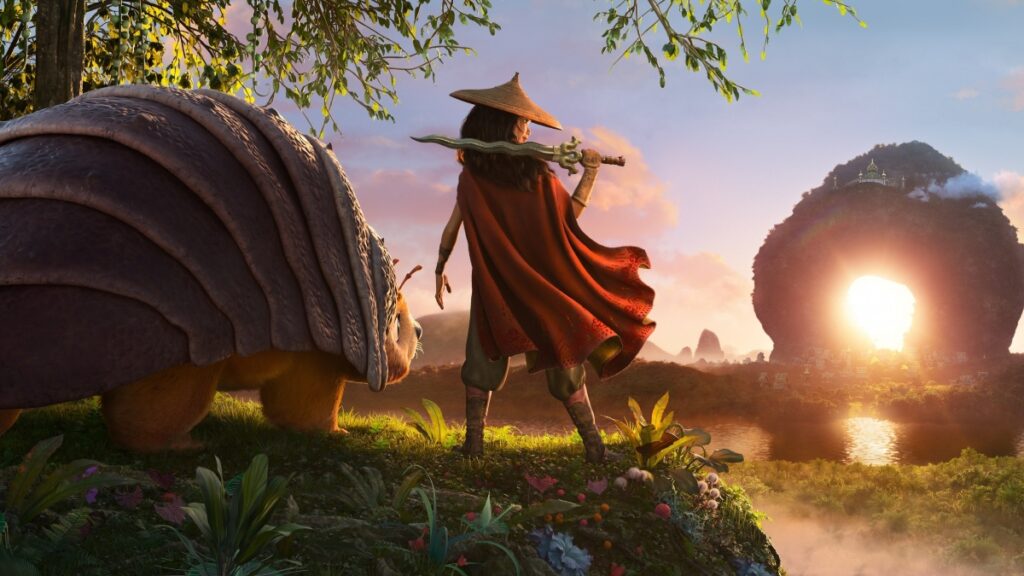
BTL: How did News crossover with Raya? Was that happening at the same time and you were trying to finish both things?
Howard: No. Fortunately, we didn’t have to do that. That happens all the time, as I’m sure you know. I don’t like working on more than one movie at the same time, I really don’t. I think we finished News of the World in late June, and I recorded Raya here in Los Angeles in I think October. I had actually started writing some Raya material last year, but then they kind of changed directions in the movie, and I put it away up on the shelf, didn’t really go back to that again. Once I was done with News of the World, I got back into it, and there you go, that was that. We recorded in October and really had a lot of fun, and I think it’s a really good movie.
BTL: I love both scores for different reasons, because they’re both so different, which is pretty amazing, especially as you say, when you’re working on two movies at once or back-to-back like that.
Howard: Well, you know what I think would be harder is when you’re working on two movies that are similar, where if I was working on two Westerns, for instance, that would be bad. [chuckles] But these were so radically different, I felt like one was the main meal and the other was dessert. They followed very nicely.
BTL: I like how Raya combined more modern synthesizers but also Asian instruments but not overdoing it. It’s an interesting balance of those two things.
Howard: Well, thank you. We spent a lot of time trying to create this unique world that is the movie in Raya. It’s a nonspecific Southeast Asian kind of feel, but there’s certainly a lot of Indonesian gamelan kind of stuff in there. But there’s also instruments that perhaps originated in China, and then they eventually ended up in Vietnam, or they ended up in some other country, but many of them sound similar. Some of them are distinctly Indonesian, but we found our way through it. [Directors] Don [Hall] and Carlos [López Estrada] really wanted an edgier, more contemporary synth and ethnic percussion sounding score much more than a traditional animated film score. I think we were able to have really lovely orchestral moments in the movie and plenty of the stuff they wanted, so I think it all worked out.
BTL: I saw that Shawn Murphy mixed News of the World. Did he also mix Raya or was that a different mixer?
Howard: No, that was Alan Meyerson on Raya. Sean was busy or doing something else. I think Sean recorded Raya at Sony, and then I think he had another commitment, and then Alan Meyerson, who I’ve worked with on a bunch of scores and who is equally brilliant in his own way, mixed it, and did a fabulous job. I’ve done 75 movies or something with Shawn, so we know each other well.
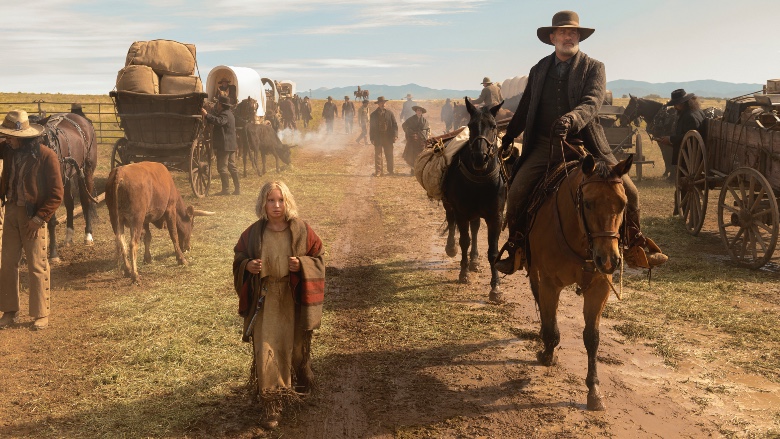
BTL: When you’re mixing your music, knowing that a lot of is going to be released as a soundtrack, so are you just giving the movie’s sound mixer a stereo mix or stems of different elements?
Howard: No, not at all. We’re doing a whole different kind of spread 5:1, 7:1 mix, and in some cases Atmos elements, as well, when we’re doing the film mix. When we’re going to the soundtrack, of course, we’re mixing in stereo. Just to fold it down into a stereo just doesn’t work. I think the reverbs have to be changed, EQs sometimes had to be changed. It can kind of load up in the middle if you’re not careful, but it’s a whole different deal. And, yeah, Alan did a great job.
BTL: I’ve talked to a bunch of younger composers in recent months. Some of them have been scoring for 10 years or less. I’ve asked them about temp music. I’m sure you’ve experienced it over the years, but I’m not sure about recently. How do you feel about temp music and do you still work with filmmakers or editors who put your music as temp on their movies?
Howard: Oh, yeah. I love to get ahead of it when possible. I always think of it like this: when a baby goose hatches, the first thing it sees, it identifies as its parent. I like to think that my music is the parent that the director, who’s the baby goose, hears my music up against his or her film and goes, “That’s what I want.”
I try and provide temp music with demos right from the beginning, but temp scores really haven’t bothered me too much. They’re informative. They do give you some indication of what the director is thinking. Sometimes, they’re god-awful and terrible, and you think, “Well, that’ll be easy to do a better job than that.” And when they’re absolutely inspiring and incredible, they challenge me to be able to rise and do a different kind of job than I might have without the temp score. They’ve never bothered me too much. I’ve maybe had a handful, five or six instances, where I could not get rid of a temp score to save my life. I finally did, but really went through battles in certain scenes.
BTL: Especially when they use your own music, because obviously you have a huge library of music for them to pull from.
Howard: Yeah, that’s the worst things, because then you’re trying to avoid sounding like yourself again, which is the thing I’m always trying to avoid. The irony is, well, that’s why you’re getting hired, because they want you to sound like yourself. It’s a constant battle of trying to evolve and do a different job and do the best job you’ve ever done each time you do a movie, but don’t stray too far from what you do, because that’s why people love what you do.
BTL: There are a few filmmakers you’ve worked with multiple times over the years where I’m sure they let you do your thing, but how about when you work with a new filmmaker? Do you find yourself competing with other composers for jobs or do you feel that once they’ve picked you, they know that’s the way to go?
Howard: God, I hope so. I don’t think of it as a competition. I guess I did in the very beginning days, but I haven’t felt like that for a long time. [With] a new director, I always feel like it’s a first date. My first day with Paul, I didn’t want to say something stupid or show him a piece of music that was lame that he didn’t like. So I’m always nervous. I get nervous when I meet directors for the first time no matter how many movies I’ve done. I quickly get over it, though, and we both kind of do a dance and pretty soon we trust each other.
Paul said it many times that the whole value of working with hiring the people that are sort of masters of what they do — if I can use that term—is that you’re able to trust them, that they will bring something not just what you wanted, but something that they will think of that you as a director didn’t think of. I think you get to a point where you trust in that process that’s occurring. And when that happens, we get really good flow. I think that Paul and I really got there with each other.
BTL: I’m glad to hear you still get that nervous feeling, because I’m sure any young composer would get that with every new filmmaker, but I wouldn’t expect that from someone who has worked with so many filmmakers and scored so many films.
Howard: I still feel like I’m eight years old half the time. So it’s really true. I get nervous and shy, but I get over it. Once I get into it, I’m sort of very pushy and confident, but we arrive there. I don’t know. Most people probably have some degree of that inside of them, but I’m one of these people that can’t really hide it very well, but I didn’t mean to go off in self-psychological exam.
BTL: You obviously worked right through the COVID pandemic, so I assume you’re still working on stuff since you finished Raya as well?
Howard: Actually, to be honest with you, once we finished Raya, I had a couple of songwriting things I was doing. I’ve actually been working on songs with Josh Groban, who I worked with. Rick Rubin and I worked on an album with Josh about 10 years ago, and Josh is so talented and a great musician. We’ve been sort of writing a few songs together, and I’ve been doing a few other little projects. But mostly I’ve enjoyed some time off before I start Fantastic Beasts 3, which will be a big mother of a movie. I’m enjoying having a little bit of space and getting ready for that.
News of the World is available on VOD, while Raya and the Last Dragon is now playing in theaters and for a premium on Disney+. News of the World photos courtesy Universal Pictures; Raya and the Last Dragon photos courtesy Walt Disney Pictures.





